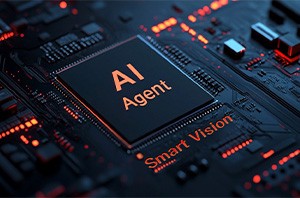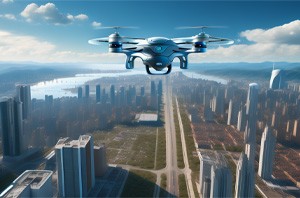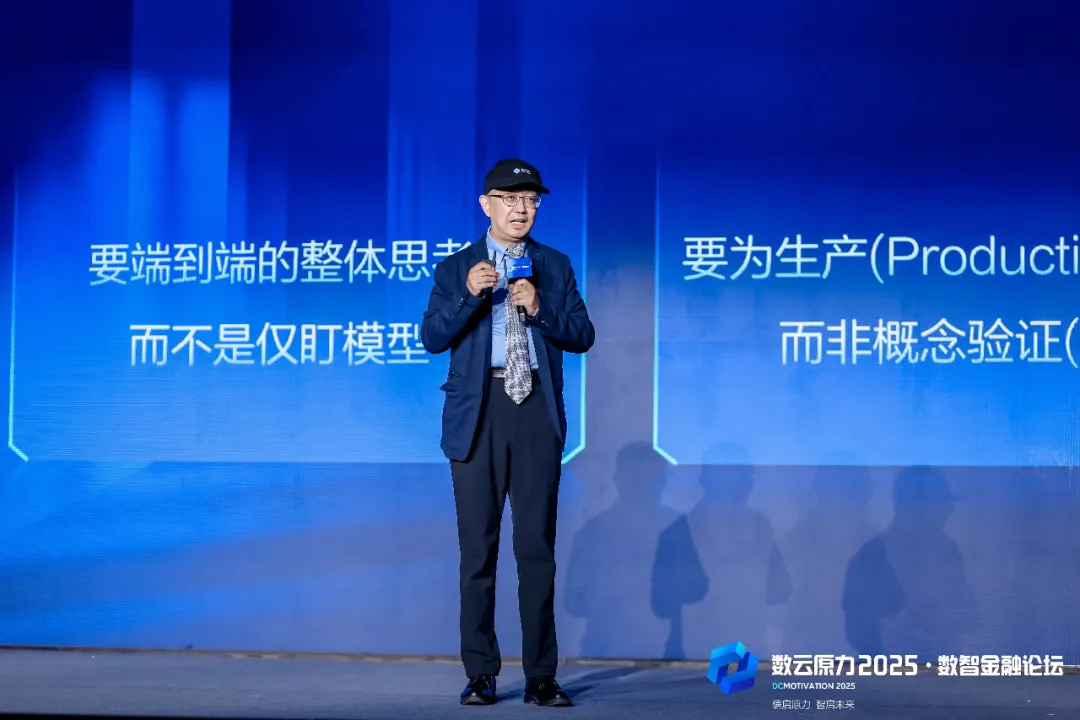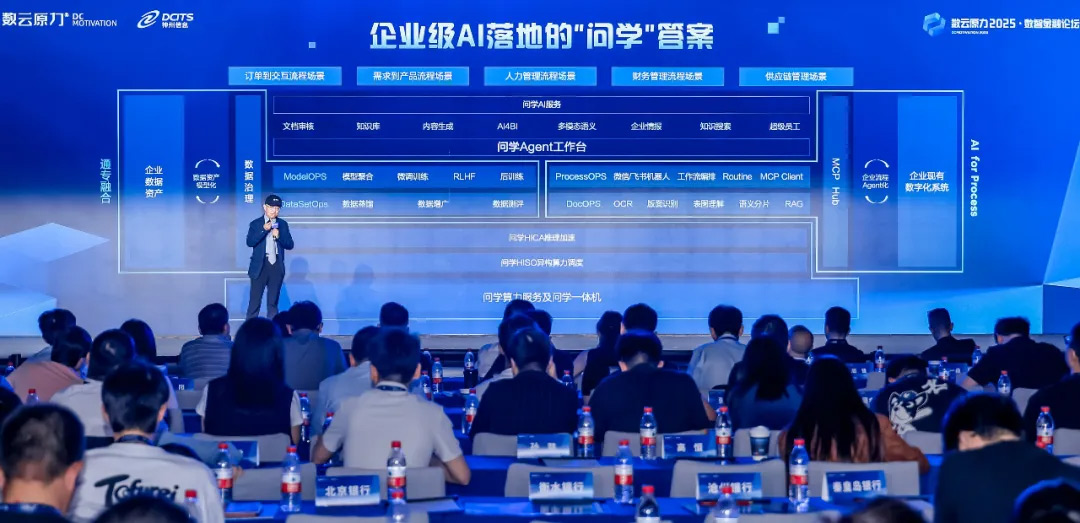On May 29, 2025, the ancient capital Xi’ an witnessed the grand opening of the “Data Cloud Force 2025· Digital Intelligence Finance Forum”. At this global fintech grand where gathering cutting-edge ideas, Li Gang, Vice President and CTO of Digital China, delivered a keynote speech, officially announcing that Digital China's self-developed “Smart Vision” had been upgraded from an AI-native empowerment platform to an enterprise-level Agent middle platform, providing a full-stack solution for the large-scale application of AI.
The Rise of the AI Agent Economy:
Enterprises have entered a new era of "carbon-based + silicon-based" synergy.
Li Gang, citing Sequoia Capital's prediction on the "Agent economy", pointed out that in the current context where the "thousand people, thousand Agents" collaboration model predicted by Jensen Huang was gradually becoming a reality. AI was no longer a conceptual product in the laboratory but was profoundly changing the operational logic and organizational methods of enterprises. He emphasized: "We are in an era of co-evolution between ‘carbon-based brains’ and ‘silicon-based intelligence’, and enterprises must reconstruct their digital competitiveness.”
At present, the application of AI has transcended the first half of "model capability validation" and officially entered the second half of the critical stage of pursuing practical performance and building a business closed loop. Facing the common confusion of enterprises in the process of AI transformation, Li Gang proposed four major rules to break through the PoC predicament:
• End-to-end system thinking: View AI as an integral part of the overall business process rather than an isolated technical module;
• Production-level design orientation: Design from the very beginning according to the standards for Production launch and sustainability;
• Agile iterative methodology: Rapid experimentation and continuous optimization, constantly refining the product in practice;
• High-goal-driven strategy: Set high standards, and drive large-scale implementation through quantitative indicators.
Li Gang particularly pointed out: "Quantifying high goals is not an obstacle but low standards are the real constraint for large-scale implementation." This viewpoint directly addresses the industry's pain points and provides clear direction guidance for enterprises in the process of AI implementation.
Facing industrial-level challenges:
The triangular game of precision, scale and cost
Given the complexity of financial policy variables, the strong industrial logic dependency of the manufacturing sector, and the barriers posed by medical clinical experience, general LLM often encounter the “incompatibility” problem. Based on the practical experience of dozens of industries and hundreds of scenarios, Digital China has summarized the core proposition for the implementation of enterprise-level AI:
• Precision Revolution: Through a “combined strategy” of SFT supervision fine-tuning, RL reinforcement learning, and RAG retrieval enhancement, the general LLM is transformed into a “domain expert” with enterprise memory and scene cognition. An accuracy rate of 97% was achieved in a bank’s intelligent review scenario.
• Scale breakout: It has developed four modules - ModelOps, DocOps, DatasetOps, and ProcessOps - to address the four-dimensional expansion challenges of data, users, scenarios, and computing power. These modules enabled a certain insurance company to complete the deployment of an Agent cluster for three major business scenarios within three weeks.
• Cost Reconstruction: By leveraging the HICA reasoning acceleration suite and the HISO heterogeneous computing resource scheduling suite, it achieves a 10-fold improvement in service performance and a 40% optimization in computing resource utilization. It can break through the ROI bottleneck of computing resource costs and engineering investment in private cloud environments.
Engineering breakthrough:
Establishing the “China Paradigm” for the Agent Factory
In response to the industry’s pain points, Li Gang unveiled the systematic solution of “Smart Vision” - by establishing four core modules: ModelOps, DocOps, DatasetOps, and ProcessOps, to create an enterprise-level Agent intelligent production line. This platform innovatively adopts the “integration of general and specialized” technical path: based on general large models such as Deepseek, it injects enterprise-specific memories and scene cognition through a “combination of punches” including SFT supervised fine-tuning, RL reinforcement learning, and RAG retrieval enhancement; relying on dual engines of document intelligence and process intelligence, it realizes the dynamic evolution of the knowledge hub and the atomic packaging of business processes. Moreover, through the HICA reasoning acceleration suite and the HISO heterogeneous computing power scheduling suite, it achieves a 10-fold increase in service performance and a 40% rise in computing power utilization rate.
Product Upgrade of “Smart Vision”:
Launching the Era of Large-scale Production of Agents
Subsequently, Li Gang announced that “Smart Vision” had been upgraded to an enterprise-level Agent Middle Platform. The “Smart Vision” enterprise Agent Middle Platform offers a complete set of AI engineering capabilities from PoC concept verification to Production launch, which can help enterprises build their own Agent Factory and promote intelligent upgrades:
• Accuracy improvement: Compared to the traditional solution, it increases by approximately 20% to 40%.
• Scale expansion: it possesses elastic expansion capabilities at the level of cloud-native technology;
• Cost optimization: Computing power costs have been reduced by approximately 40%.
Just as Li Gang said: "Just like the Ford Model T car revolutionized manufacturing and containers reshaped logistics, the true winners are not always the innovators of the technology, but rather those who first applied the innovations on a large scale and continuously iterated them throughout the history of human industrial revolutions. What “Smart Vision” aims to do is to create an Agent Factory for enterprises, allowing intelligent agents to be efficiently produced and managed like industrial products.”
At the starting place of the ancient Silk Road, a new revolution in the productivity of intelligent entities is about to take shape. With the accelerated penetration of the “intelligent entity economy”, enterprises’ expectations for AI have shifted from “usable” to “is easy to use”, “is simple to use", and “available”. With its core strength of systematic engineering capabilities, “Smart Vision” helps enterprises build “silicon-based productivity”, seizing strategic advantages in the tide of digital and intelligent transformation.
In the future, Digital China will continue to deepen its AI engineering capabilities, promote AI to move from “technical experimentation” to “commercial value", and from “single-point breakthrough” to “ecological evolution”. It will provide more mature, stable and efficient AI Agent middle-platform solutions for Chinese and global enterprises.
 Smart Vision
Smart Vision Shenzhou Kuntai & Smart Vision Integrated GenAI Suite
Shenzhou Kuntai & Smart Vision Integrated GenAI Suite Data Asset Accounting
Data Asset Accounting Data Security Control Platform
Data Security Control Platform Shenzhou Yanyun Integrated Solutions
Shenzhou Yanyun Integrated Solutions Cloud Management Services
Cloud Management Services AI Computing Power Servers
AI Computing Power Servers Storage Products
Storage Products Low-Altitude Solution
Low-Altitude Solution RaaS Operation Service Solution
RaaS Operation Service Solution

